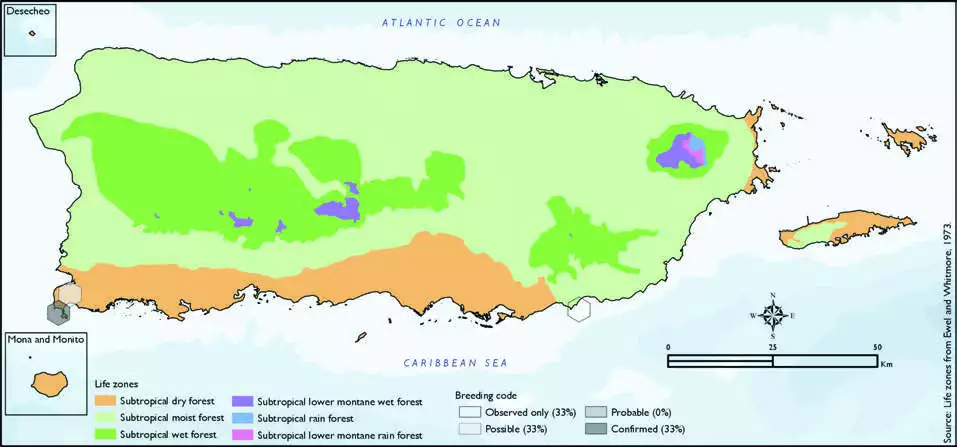Snowy Plover
Description
The snowy plover (Charadrius nivosus) is a small wader in the plover bird family, typically about 5-7" in length. It breeds in Ecuador, Peru, Chile, the southern and western United States and the Caribbean. Long considered to be a subspecies of the Kentish plover, it is now known to be a distinct species.
Distribution & Habitat
The Snowy Plover ranges from the Western and Southern United
States to northern and western South America and the Caribbean
(Raffaele and others 1998).
Within the Caribbean, it occurs
commonly in the southern
Bahamas north to San Salvador,
and in Hispaniola and Anguilla,
while it is considered uncommon
in the northern Bahamas, Puerto
Rico, the Virgin Islands, St.
Martin, and St. Barthélemy, and
very rare on Cuba (Raffaele and
others 1998). It is an uncommon
and localized permanent resident
in Puerto Rico (Oberle 2018,
Raffaele and others 1998), limited
to the extreme southwestern
corner of the main island, where
it can be regularly seen in the
salt fl ats of Cabo Rojo. The
species has not been recorded
from Vieques (Gemmill 2015),
and only one published record
exists for Culebra, at least at the time of publication of the field
guide by Raffaele and others
(1998). This species habitat
includes mostly sandy beaches
and lagoon edges with salt fl ats
or salt ponds (Oberle 2018,
Raffaele and others 1998). The
atlas fieldwork yielded a total of
14 records within three hexagons
or 0.6 percent of the 479 total
hexagons (see map). Of the three
hexagons where this species was
found, breeding met the atlas
definition of confirmed in 33
percent (one) of the hexagons
and possible in 33 percent (one)
as well, while the species was
observed in 33 percent (one)
of the hexagons but without
evidence of breeding (see map). Snowy Plover distribution. The map shows the highest breeding code by hexagon and overlaying the ecological life zones in
Puerto Rico. Note: percentages may not total 100 due to rounding. 109Snowy Plover/Chorlito Blanco

Breeding Habits
The Snowy Plovers nest consists of a depression made in the
sand, sometimes bordered
with shell pieces (Biaggi 1997,
Oberle 2018, Raffaele and others
1998), and it generally nests in
small colonies (Biaggi 1997).
Previously published reports
indicate that it breeds from
January to August (Raffaele and
others 1998). Atlas results based
on small sample size show that
this species breeds mostly from
October to December but also
during the months of March,
May, June, and August (see
chart). Overall, the breeding activity peaks in October and
takes place in coastal areas
within the subtropical dry forest
life zone (100 percent of the
hexagons) (see table and map).
Conservation
The current population trend of the Snowy Plover is described
as decreasing throughout the
Western Hemisphere following
evidence of regional declines
and due to ongoing threats
like habitat degradation and
disturbance (Page and others
2009, Thomas and others 2012).
This species is currently listed
as a Near Threatened species by the IUCN (BirdLife International
2017), and locally it is classified
as critically endangered
(PRDNER 2016). In Puerto Rico,
the Snowy Plover has a protected
habitat in land of 21 percent or
10 km2 of the total area where evidence of breeding was
found for this species (48 km2). However, this value represents
an underestimation of the actual
terrestrial habitat protected
(estimated to be about 80100
percent) as a large portion of the
hexagons for this species lay on
the water.
Related Species
Family:
plover